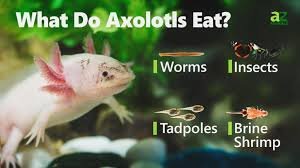
king penguin baby
What Is a King Penguin Baby?
A King Penguin baby, also called a chick, is the young offspring of the King Penguin, the second-largest penguin species in the world. These fluffy brown chicks are born into one of the harshest environments on Earth—the sub-Antarctic islands—and go through a remarkable transformation before reaching adulthood. At first glance, they look nothing like their sleek, tuxedoed parents. Instead, they are covered in thick, chocolate-brown down feathers that help them withstand extreme cold. Although they may not seem regal at birth, King Penguin babies are marvels of evolution, perfectly adapted for survival in frigid conditions.
How Are King Penguin Babies Born?
Unlike many birds that build nests, King Penguins incubate their eggs on their feet, keeping them warm beneath a fold of belly skin called a brood pouch. The mother lays a single egg, and both parents take turns keeping it warm for about 54 days. After hatching, the baby penguin continues to rest on its parent’s feet for warmth and protection during the early weeks. This form of egg incubation and chick rearing is unique among penguins and is critical to survival in the cold, wind-swept environments of South Georgia, the Falklands, and other sub-Antarctic regions.
Appearance and Features of a King Penguin Chick
One of the most surprising facts about a King Penguin chick is that it looks nothing like the adult bird. Adults are tall, sleek, and feature black, white, and bright orange plumage, while babies are plump and covered in soft brown down. This down serves as insulation, protecting them from freezing temperatures until they develop adult feathers. Because of their color, early explorers once mistook these chicks for an entirely different species. Their large, round bodies and tiny black beaks give them a distinctly adorable and cuddly appearance, making them one of the cutest baby animals in the world.
How Do Parents Feed King Penguin Babies?
King Penguin parents play equal roles in raising their chick. They take turns traveling to the sea to hunt fish, squid, and krill, storing the food in their stomachs. When they return, they regurgitate the partially digested food directly into the chick’s mouth. This nutrient-rich meal is essential for the chick’s rapid growth during its first few months. As the chick gets older, the intervals between feedings can stretch from days to weeks, especially during the winter when food is scarce. The chick’s ability to fast for long periods while waiting for a parent to return is a key survival trait.
The Crèche Stage: Safety in Numbers
After about a month, the King Penguin chick becomes too large to stay on its parent’s feet. At this stage, it joins a crèche, a group of chicks that huddle together for warmth and protection while their parents forage for food. Crèches can contain hundreds or even thousands of chicks and resemble a brown fuzzy sea of young penguins. This communal rearing strategy helps reduce the risk of predation and conserves body heat during the freezing sub-Antarctic winter. Within the crèche, each chick learns to recognize its parents by their distinct vocal calls, which is how feeding resumes even in such massive gatherings.
How Long Does It Take for a King Penguin Chick to Grow Up?
The development of a King Penguin baby is relatively slow compared to other penguin species. It can take 10 to 13 months for the chick to grow large enough and develop waterproof feathers to survive on its own. This extended juvenile phase is mainly due to the harsh climate and the limited availability of food during certain seasons. Once the chick molts its brown down feathers and replaces them with sleek black-and-white adult feathers, it becomes ready to leave the crèche and begin life independently. At this point, the young penguin heads to sea, where it will spend several years before returning to breed.
Where Do King Penguin Babies Live?
King Penguin colonies are found on sub-Antarctic islands such as South Georgia, Kerguelen, Macquarie Island, and the Falkland Islands. These colonies are typically located near the coast, where adults can access the ocean to hunt. The land is often rocky and windswept, making it an extreme environment to grow up in. Despite the conditions, these chicks thrive thanks to their down insulation, crèche protection, and attentive parenting. Many colonies can number in the hundreds of thousands, making them one of the most visually impressive wildlife spectacles in the animal kingdom.
What Threats Do King Penguin Babies Face?
Despite their adaptations, King Penguin chicks face numerous threats. The most common challenges include predation, starvation, and climate change. Predators like skuas and giant petrels prey on unprotected chicks, especially those that wander from the crèche. During harsh winters or food shortages, some chicks may not survive the long fasting periods between feedings. Climate change is also affecting the availability of fish and krill, which can lead to reduced breeding success and chick survival rates. Human disturbance, oil spills, and overfishing further threaten the stability of these incredible penguin colonies.
Interesting Facts About King Penguin Babies
- They’re born once every two years: Because of the long rearing period, King Penguins don’t breed annually like many other birds.
- They can weigh more than adults: At their fluffiest stage, chicks can look larger than their parents due to their thick down.
- Their brown color is strategic: The dull coloring helps them absorb heat and stay warm in cold environments.
- They’re vocal geniuses: Chicks and parents have unique calls that help them identify each other in massive crèches.
- They don’t swim right away: Unlike some penguin species, King Penguin chicks stay on land for nearly a year before heading to sea.
Final Thoughts: The Majestic Journey of a King Penguin Baby
The life of a King Penguin baby is a journey of resilience, patience, and adaptation. From their birth in frozen colonies to their transformation into graceful adult penguins, these chicks embody the wonders of wildlife evolution. Despite the freezing temperatures, harsh winds, and long periods without food, King Penguin chicks thrive thanks to nature’s incredible design and the unwavering dedication of their parents. Watching these fuzzy brown fluffballs grow into ocean explorers is one of the most heartwarming and awe-inspiring sights in the animal kingdom. Whether you’re an animal lover, wildlife enthusiast, or nature photographer, the story of the King Penguin baby is truly unforgettable.






